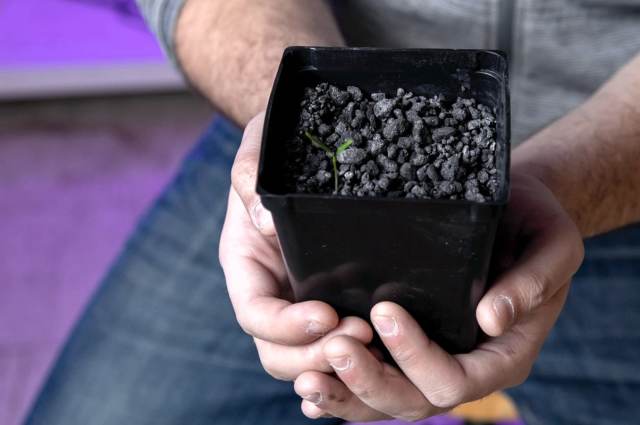The addition of moss made it possible to obtain sprouts of pepper, radish and lettuce on a black substance-a carbonaceous chondrite simulator.
Not only designers, engineers and astrophysicists, but also biologists are preparing for the future development of the Solar System. In order to provide habitable space bases and crews with everything necessary for life as fully as possible, they learn to grow cultivated plants in orbit, on lunar and even Martian soil. And recently it was possible to show that it is possible to "harvest" even from asteroids. This work is described in an article published inThe Planetary Science Journal.
Sherry Fieber-Beyer and her colleagues from the University of North Dakota used a carbonaceous chondrite substance simulator. Chondrites are the most common type of meteorites falling to Earth, which contain rounded inclusions of silicates. Carbonaceous ones are not so common and make up less than five percent of the total number of chondrites. However, they differ in a particularly diverse composition, contain carbon, nitrogen, potassium and phosphorus, and sometimes simple organic compounds.
Theoretically, when people begin to develop the mineral resources of asteroids, carbonaceous chondrites can provide them with soil for growing fresh herbs and vegetables. This was demonstrated by the example of Roman lettuce, radishes and chili peppers – plants that previously managed to grow on board the ISS. Experiments have shown that they grow best if sphagnum moss is added to the simulator of the chondrite substance, which creates numerous pores in the soil that retain water.
Biologists are planning to continue their experiments and now they will try to grow hairy peas "on an asteroid". This plant is not used in large quantities for food, but it is widely grown for pasture animals, as well as to increase the yield of fields. Scientists are going to let them grow, die and decompose in such soil – it is assumed that such an additive will be more useful than sphagnum. In addition, it will be easier and cheaper to send a cargo of pea seeds to a distant asteroid than green moss.

